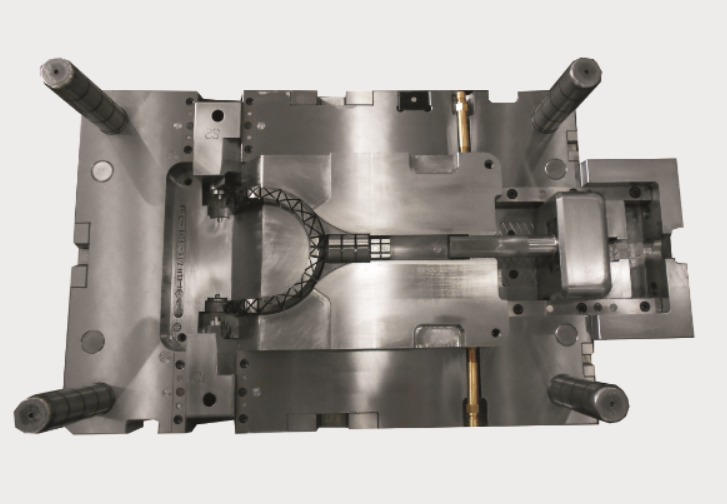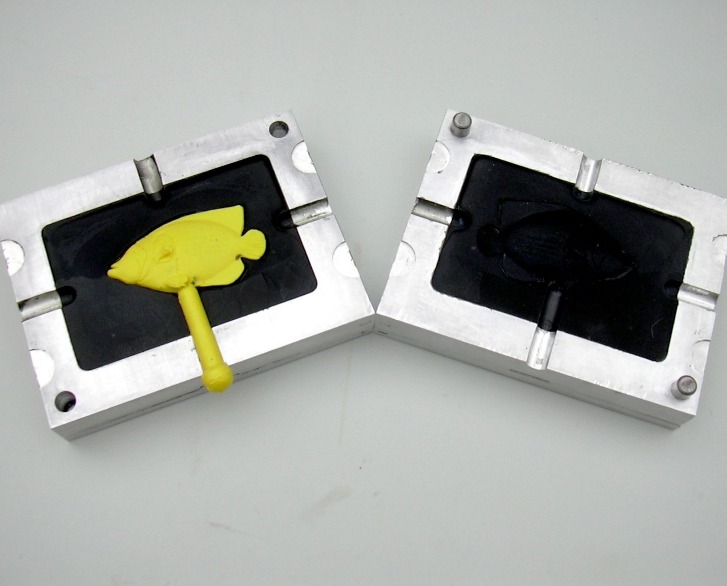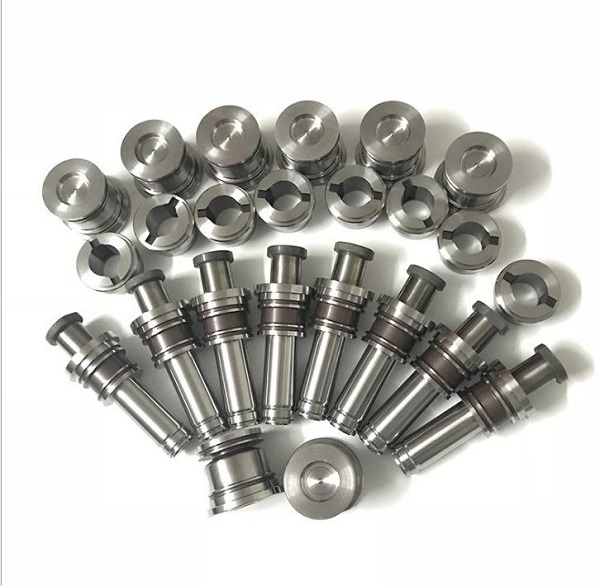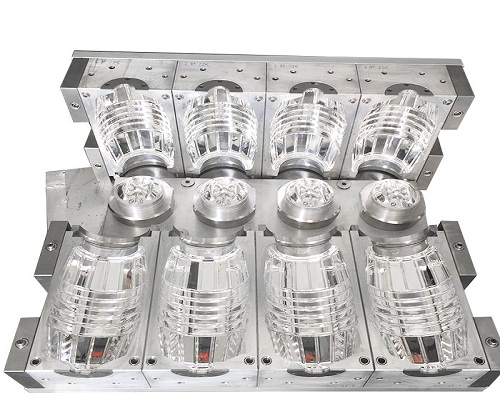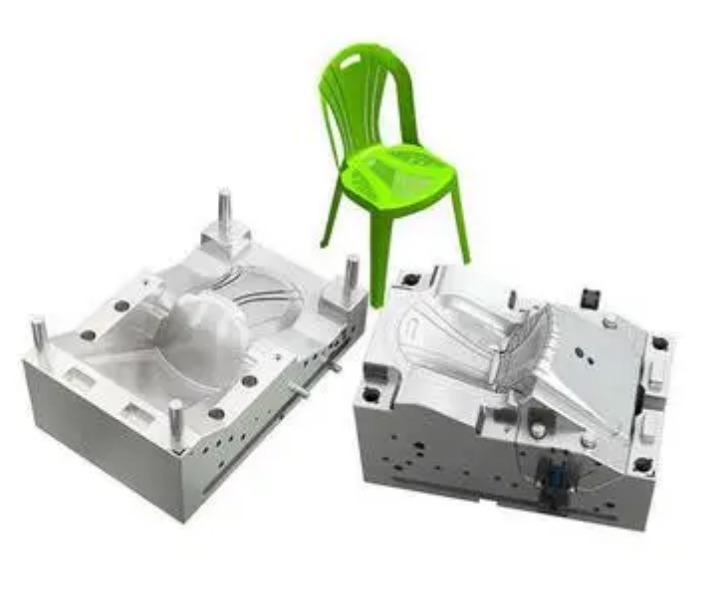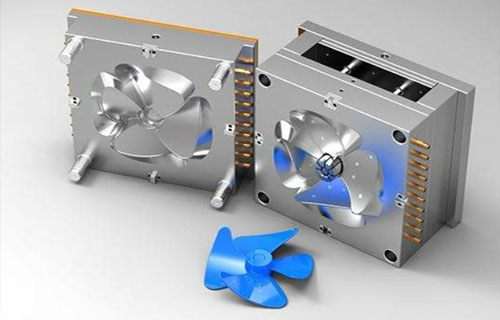Introduction
Plastic products are everywhere in our daily lives. From the water bottles we use to stay hydrated, the food containers that keep our meals fresh, to the intricate components within our electronic devices and the stylish exteriors of our automobiles, plastics have become an integral part of modern living. Their versatility, durability, and cost - effectiveness have made them the material of choice across a vast array of industries, including packaging, automotive, electronics, and consumer goods.
Behind every plastic product, there is a plastic mold. A plastic mold is like a blueprint in the manufacturing world, determining the shape, size, and details of the final plastic item. However, one question that often puzzles those involved in plastic product manufacturing or those considering entering this field is: What are the factors that determine the processing price of plastic molds? Understanding these factors is crucial for businesses aiming to optimize costs, plan budgets effectively, and make informed decisions in the highly competitive plastic manufacturing industry. In this article, we will delve deep into the various elements that influence the processing price of plastic molds, providing you with comprehensive insights and practical knowledge.
1. Complexity of Design
1.1 Geometric Complexity
The geometric complexity of a plastic mold is a fundamental factor in determining its processing price. When a mold has simple geometric shapes, such as a basic rectangular or cylindrical form, the manufacturing process is relatively straightforward. CNC (Computer Numerical Control) machines can easily execute the machining operations with standard cutting tools and common programming paths. For example, a simple plastic container mold with a regular cuboid shape can be machined quickly, and the production cost remains relatively low.
However, when dealing with molds that have complex geometric features, the situation becomes much more challenging. Molds with complex curved surfaces, like those used to manufacture automotive body panels or high - end consumer electronics casings, require advanced machining techniques. Complex curved surfaces often cannot be achieved with standard machining methods. Instead, five - axis CNC machining centers are usually needed. These machines can move the cutting tool in multiple directions simultaneously, allowing for the precise shaping of complex geometries. But five - axis machining centers are more expensive to operate, require highly skilled operators, and the programming for these machines is far more intricate.
Moreover, molds with internal structures, such as hollow molds with intricate internal channels for water cooling or molds with complex undercuts, add another layer of complexity. Undercuts are areas of the mold that cannot be removed by simple linear extraction during the molding process. Special mechanisms like side - action cores or lifters need to be designed and incorporated into the mold. These additional components not only increase the material cost but also the complexity of the mold's assembly and disassembly, thus driving up the overall processing price.
1.2 Tolerance Requirements
Tolerance requirements play a crucial role in determining the processing price of plastic molds. Tolerance refers to the allowable deviation from a specified dimension in the mold's design. In general, the more precise the tolerance requirements, the higher the cost of mold processing.
For molds with low - precision tolerance requirements, basic machining equipment and common manufacturing processes can be used. For instance, in the production of some general - purpose plastic household items like plastic buckets or simple toys, a relatively large tolerance range (such as ±0.5mm) can be acceptable. Standard CNC milling machines or lathes can achieve such tolerances without much difficulty, and the production efficiency is high, resulting in lower processing costs.
On the contrary, high - precision tolerance requirements pose significant challenges to the processing equipment and manufacturing processes. In industries such as aerospace, medical device manufacturing, and high - end electronics, molds need to meet extremely tight tolerances, sometimes in the range of ±0.01mm or even smaller. To achieve such high - precision tolerances, advanced and expensive precision machining equipment is essential. Ultra - precision grinding machines, electrical discharge machining (EDM) equipment with high - precision positioning systems, and high - end CNC machining centers with advanced control systems are often employed. These machines are not only costly to purchase but also require regular calibration and maintenance to ensure their accuracy.
In addition, high - precision tolerance requirements demand highly skilled and experienced technicians. These professionals need to have in - depth knowledge of precision machining techniques, understand how to compensate for various factors that may affect dimensional accuracy during the machining process, such as thermal expansion and tool wear. The labor cost associated with these skilled workers is also relatively high, further contributing to the increased processing price of the mold.
2. Material Selection
2.1 Types of Plastic Materials
The choice of plastic materials is a key determinant of the processing price of plastic molds. There are numerous types of plastic materials available in the market, each with its own unique set of properties and price points.
ABS (Acrylonitrile - Butadiene - Styrene) is a popular engineering plastic. It combines the strength and rigidity of acrylonitrile, the toughness of butadiene, and the processability of styrene. ABS has excellent impact resistance, dimensional stability, and is easy to machine and mold. It is commonly used in the production of electronic device housings, automotive interior components, and toys. The price of ABS is relatively moderate among plastic materials, usually ranging from \(1500 - \)2500 per ton.
PP (Polypropylene) is a semi - crystalline thermoplastic polymer. It has good chemical resistance, high heat resistance (it can withstand temperatures up to around 130 - 150°C in some grades), and is relatively lightweight. PP is widely used in the packaging industry, for making plastic containers, food packaging, and disposable cutlery. It is also used in automotive parts such as bumpers. PP is more cost - effective than ABS, with prices typically in the range of \(1000 - \)1500 per ton.
PE (Polyethylene) comes in different forms, including LDPE (Low - Density Polyethylene) and HDPE (High - Density Polyethylene). LDPE is known for its flexibility, transparency, and softness. It is often used in the production of plastic bags, film wraps, and some soft - touch consumer products. HDPE, on the other hand, has higher strength, stiffness, and chemical resistance. It is used for making pipes, bottles, and industrial containers. The price of LDPE is around \(1000 - \)1300 per ton, while HDPE is slightly more expensive, ranging from \(1100 - \)1400 per ton.
PC (Polycarbonate) is a high - performance engineering plastic. It has outstanding impact resistance, high transparency (similar to glass in some cases), and excellent heat resistance, with a heat - deflection temperature of around 130 - 140°C. PC is used in applications such as automotive headlights, safety goggles, and electronic device screens. Due to its high - performance properties, PC is relatively expensive, with prices usually above $2500 per ton.
PVC (Polyvinyl Chloride) is a versatile plastic. It has good chemical resistance, flame retardancy, and can be made soft or rigid depending on the additives used. Rigid PVC is used in construction for pipes and window frames, while soft PVC is used in applications like vinyl flooring and some types of toys. PVC is one of the more affordable plastic materials, with prices in the range of \(800 - \)1200 per ton.
2.2 Material Quality
The quality of the plastic material also has a significant impact on the mold processing price. High - quality plastic materials offer several advantages. Firstly, they often have better mechanical properties. For example, high - grade ABS may have even higher impact resistance and dimensional stability compared to lower - grade ones. This is crucial for applications where the plastic product needs to withstand harsh conditions or maintain its shape and functionality over a long period.
Secondly, high - quality materials are more durable. They are less likely to experience degradation, cracking, or deformation during the molding process or in the long - term use of the final product. This reduces the risk of product defects and rework, which can save costs in the long run. However, high - quality materials usually come at a higher price.
Manufacturers may choose to use high - quality materials when the end - product requires high performance and reliability. For example, in the aerospace and medical device industries, only the highest - quality plastic materials are acceptable due to strict safety and performance standards. In such cases, the higher cost of the material is factored into the overall mold processing price. On the other hand, for less demanding applications like some low - cost consumer goods, lower - quality but more cost - effective materials may be selected to keep the production cost down.
3. Manufacturing Processes
3.1 Injection Molding
Injection molding is one of the most widely used manufacturing processes for plastic products. The principle of injection molding is to melt plastic pellets and inject the molten plastic into a mold cavity under high pressure. Once the mold cavity is filled, the plastic cools and solidifies, taking on the shape of the mold.
The process begins with the plastic material being loaded into a hopper. From there, it enters a heated barrel where a screw rotates to melt and mix the plastic. The molten plastic is then forced through a nozzle and into the closed mold cavity. After the plastic has cooled and solidified, the mold opens, and the finished part is ejected.
The cost of injection molding can be broken down into several components. Equipment cost is a significant factor. High - quality injection molding machines can range in price from tens of thousands to millions of dollars, depending on their size, capacity, and precision. For example, a small - to - medium - sized injection molding machine suitable for producing common consumer goods may cost around \(50,000 - \)200,000, while a large - scale, high - precision machine used for automotive or aerospace parts can cost upwards of $1 million. These costs are often amortized over the production volume.
Mold cost also contributes substantially to the overall price. As mentioned earlier, the complexity of the mold design affects its cost. A simple injection mold for a basic plastic part may cost a few thousand dollars, while a highly complex mold with intricate details and advanced features can cost hundreds of thousands of dollars.
Processing cost includes factors such as energy consumption during the heating and injection process, labor costs for operating the machine, and the cost of any additives or colorants used in the plastic material. Energy consumption can vary depending on the size of the machine and the cycle time of the injection process. Labor costs are influenced by the skill level required to operate the machine and the production volume. For high - volume production runs, the labor cost per unit can be reduced due to economies of scale.
3.2 Other Processes
There are other plastic processing techniques besides injection molding, each with its own cost characteristics.
Blow molding is commonly used for producing hollow plastic products like bottles and containers. In blow molding, a parison (a tube - like piece of molten plastic) is formed and then inflated inside a mold to take on the shape of the mold cavity. The equipment cost for blow molding is generally lower than that of injection molding for large - scale production of simple hollow products. For example, a small - scale blow molding machine for producing plastic bottles can cost around \(20,000 - \)50,000. The mold cost for blow molding is also relatively lower for simple shapes as the molds are often less complex compared to injection molds. However, the production speed of blow molding is usually slower than injection molding, which can affect the overall cost - effectiveness for high - volume production.
Extrusion is a process used to create continuous profiles of plastic, such as plastic pipes, sheets, and profiles. In extrusion, plastic is melted and forced through a die with a specific cross - sectional shape. The equipment for extrusion, including extruders and downstream equipment for cooling and shaping, can cost from $30,000 for a small - scale setup to several hundred thousand dollars for a large - scale, high - capacity extrusion line. The die cost in extrusion is relatively lower than the mold cost in injection molding for many applications. Extrusion is highly efficient for producing long - run, continuous products, but it is not suitable for producing complex, discrete parts like injection molding.
In general, when comparing these processes to injection molding, injection molding is often more suitable for producing complex - shaped, high - precision parts in high volumes, but it comes with higher equipment and mold costs. Blow molding is ideal for hollow products, and extrusion is best for continuous profiles, and both may have lower costs in their respective application areas compared to injection molding for the same type of product.
Yigu Technology's View
As a non - standard plastic metal products custom Supplier, Yigu Technology deeply understands the importance of the factors determining the processing price of plastic molds. We pay close attention to every detail in the mold - making process. With our professional experience and advanced equipment, we strive to optimize the manufacturing process. For example, when dealing with complex - designed molds, our skilled engineers use innovative design methods to simplify the structure without sacrificing functionality, thus reducing processing difficulty and cost. In terms of material selection, we have established long - term partnerships with reliable suppliers. This allows us to source high - quality materials at reasonable prices. We are committed to providing our customers with high - quality plastic molds at competitive prices, ensuring cost - effectiveness without compromising on quality.
FAQs
Q1: How does the complexity of a plastic mold design affect its price?
A: Molds with complex geometric shapes, such as those with complex curved surfaces or internal structures, require advanced machining techniques and additional components. This increases equipment costs, labor costs, and material costs, leading to a higher price. For example, five - axis CNC machining centers are often needed for complex molds, and the programming for these machines is more intricate, driving up the cost.
Q2: Why is the quantity of production important for the processing price of plastic molds?
A: Larger production quantities allow for economies of scale. The initial investment in the mold is spread out over more products, reducing the per - unit cost. In high - volume production, the production process can be optimized, and resources can be better utilized, further lowering costs. In contrast, small - batch production has a higher per - unit cost due to ineffective cost - spreading and production inefficiencies.
Q3: What are the differences in cost between injection molding and blow molding?
A: Injection molding is suitable for complex - shaped, high - precision parts in high volumes. It has higher equipment and mold costs. High - quality injection molding machines can be very expensive, and complex molds also add to the cost. Blow molding is commonly used for hollow products like bottles. The equipment cost for blow molding is generally lower for large - scale production of simple hollow products, and the mold cost is also relatively lower for simple shapes. However, its production speed is usually slower than injection molding.
